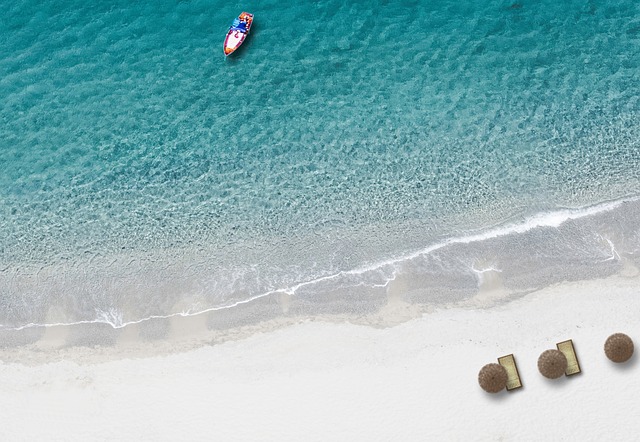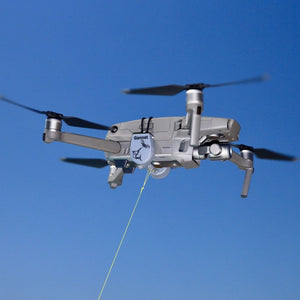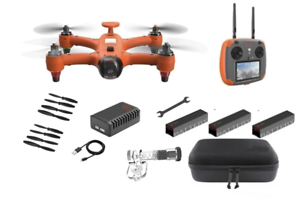
We'll be covering the basics of a drone-fishing rig in this article. We'll also be discussing what to consider when choosing your drone, how to charge it, and the payload. Then, we'll discuss some ways you can get the most from your drone. Keep reading to learn more. You will soon be able to fly the drone of your dreams. Let's go !... and maybe catch some fish!
Basic drone fishing gear
The first thing you will need to drone fish is a set of hooks. The fishing line should be doubled and should be mono or braid. It should be tied with a Cat's Paw Loop, Uni knot or Uni knot. You will need a sinker that weighs between 2 and 8 ounces as well as hooks to attach to the second section. The final step is to attach the lead loop and end loop of your drone using a snap swivel.
There are many methods to make a fishing helicopter. One basic method involves attaching a hook on the drone's landing gear and spinning the line until it releases. Other low-cost ways include using a dropper to keep the fishing line below the drone and a drop line. A dropper allows you to keep the main line below the drone without getting tangled with the propellers. Fishing drones can be outfitted with accessories such as a dock or a battery pack.
You'll need some additional equipment after you have purchased your basic drone fishing kit. A long fishing line (approximately 700m) and a bait-dropping device are essential. These are optional extras but will make your drone fishing trip more enjoyable. A good drone will give you a clearer view of your surroundings, and you'll be able to spot fish more easily.

Payload for drone fishing equipment
You need to know the safety precautions that must be taken if you plan to catch a fish with a drone. Your drone should not be flown in strong winds or rain. Here are some suggestions:
First, ensure that your drone is strong enough to carry your weight. You can't load it with heavy lures, braided or heavy line. Also, if you're fishing at a seaside location, the wind may blow the drone off its course. It is important to review local regulations and laws. Some may not allow you to fish from a drone. You need to ensure that your drone is strong enough to carry you when you go fishing.
Next, you need to decide which accessories will be needed to mount your drone. To reduce the weight distribution issues, it is a good idea to use a rigging system with a central attachment point. The best attachment points for drones are motor struts, landing gear, or legs. It is important to avoid attaching any payload to the camera and gimbal because these can damage them. A simple solution is to tie a length of fishing line from one corner to the other. To stop the line from falling out, you can attach tape to it.
Battery life of drone fishing rig
Before you take off fishing with your drone, make sure to check all the gear and batteries. This will prevent your drone from running low on battery life, and you can focus on fishing instead. Some drones can be charged with car batteries or solar panels. Be sure to have fully charged batteries before you begin. This will make sure your drone is ready when you arrive at your fishing spot.

Another important factor to consider is the drone's flight time. There are some models that have longer flight time than others. However, a drone with a flight time of twenty-two minutes is sufficient to get the job done. This is great if the drone can fly for hours on the water. But you should be aware that a drone with limited endurance will be inoperable and will make it nearly impossible for you to catch fish.
After you have setup your fishing rig, attach the fishing line clip to either the legs or the motor struts. Attach the bait and line to the drone. Lock the reel when you are ready for the drone to fly. Once you release the line, tension will build and the drone will drop the bait in the water. Remember to charge the battery after every use, or it may not work properly.
FAQ
Can I fly my drone around my neighborhood?
Yes! These are called UAVs (unmanned aircraft vehicles). There are many types of drones on the market today, including small quadcopters and large fixed-wing aircraft. The FAA recently updated its rules regarding commercial UAV use. You can now legally fly them to business purposes. However, be aware that flying a UAV near airports may cause interference with air traffic control systems, and you must obtain permission from local authorities before operating one.
Where can I buy a drone?
Many different drones are available online. Some people prefer buying their drones through Amazon, eBay, or Walmart. Others prefer to purchase drones directly through the manufacturers.
Do I require special training to fly a drone
No, you don’t need any special training in order to fly your drone. You only need a remote controller unit and basic knowledge about flight mechanics.
What are the laws regarding flying drones
The Federal Aviation Administration (FAA), which regulates all aspects drone operations in the United States of America, is responsible for them. To operate a drone commercially, you must first get a certificate from the FAA. Next, you will need to complete a course in flying skills and pass an exam. Final, you will need to pay a fee.
Statistics
- According to ZipRecruiter, the minimum hourly wage of drone pilots is $20. (thedroneu.com)
- With the top 10% making over $100/h and the bottom 10% making as low as $10/h. (dronesgator.com)
- According to industry research from ZipRecruiter , there are 10 cities where the typical salary for a Drone Pilot job is above the national average. (dronesgator.com)
External Links
How To
How to Fly Drones with Beginners
A drone can be used to fly remotely controlled aircraft for photography, surveillance, scientific research, hobby and commercial purposes. Drone technology has been around since World War II. DJI introduced their Phantom series of quadcopters in 2010, but commercial use only began in 2010. There have been many types of drones since then, including beginner-friendly drones like the Parrot AR Drone 2.0 and professional-grade multi-rotor crafts like the DJI Mavic Pro.
There are several ways to fly a drone, including;
-
Remote control - This allows you to control the drone from your hand. There are two main types of controllers: On/Off switches (like a radio) and joysticks.
-
Manual Control - This method uses a smartphone app to remotely control the drone using GPS coordinates. Follow the instructions of the app to track the exact location you want the drone go.
-
Autonomous Flying - This allows the drone to take over all of the piloting duties. The drone is able to fly autonomously, without the need for human intervention. For the autonomous flight to occur, the drone must have a built-in camera and sensors capable of capturing images and data.
-
Triggered Flight – This method is very similar to manual flight. The pilot creates a route that the drone will follow until it reaches the destination. After the program is complete, the drone automatically returns to the ground.
-
Landing Gear - Some drones come equipped with landing gear that allows them to land safely if they lose power or run out of battery during flight.
-
Goggles - Pilots may wear goggles to shield themselves from flying debris.
-
Camera - You can capture photos and videos with your drone from the air.
-
Obstacles - Some drones can be equipped with obstacle avoidance systems that prevent them from crashing into obstacles.
-
Speed - Some drones can reach speeds of over 40 mph.
-
Battery Life: Most drones have a battery life of between 20 and 30 minutes depending on how many power sources you use.
-
Range - Depending on the model, some drones can travel up to 30 miles away.
-
Power source: Some drones will require an external power source while others can be powered by internal batteries.
-
Weight - Some drones can be as light as 1 pound while others can reach 4 pounds.
-
Size - From small drones that can be carried in the palm of one's hand to larger drones that weigh over 50 pounds, drones come in a variety of sizes.
-
Price - Drones come in a variety of price categories, including high-end models which can run into the thousands and low-cost options that can start at $100.